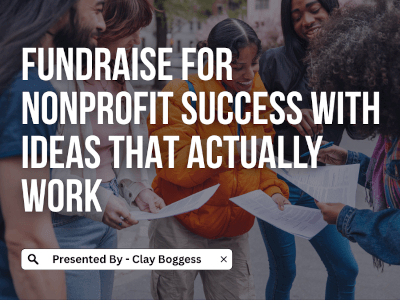
Tips to help guide your next school fundraiser.
School groups raise over $1.5 billion yearly, selling products to fund the majority of “extras” for their students. Hosting the same fundraisers year after year can cause the process to run on autopilot.
If you find yourself in a rut or need some helpful reminders, consider these five tips and tricks for your next round of school fundraising:
1. Hold a goal-setting session.
Ready, aim, go! Putting goals to paper helps everyone on the team set their sights on the prize. Setting fundraiser goals helps visualize success and demonstrates the impact and rewards of the effort. Be sure to address (1) how the fundraiser supports a shared mission and (2) how you will use the money raised.
During the goal-setting session, clearly show how reaching each goal level benefits the school or organization. When students have transparency of purpose and a path to follow, they are more confident in their abilities.
2. Take to social media.
When parents think of traditional school fundraising, we envision a paper order form and a catalog typical of our school days. Today, with the option for online sales and phone payments, schools can seamlessly promote each fundraiser on their social media pages.
Make sure to cross-link the posts (tagging the school in your post or adding a link to the school or team website). With the growth of online fundraisers, it is important to highlight the impact of your specific fundraiser on your student(s). Encourage action by posting and messaging regular reminders to your network.
3. Teamwork makes the dream work.
Recruiting fundraising volunteers with various strengths can make a difference in meeting your goals. “There is no such thing as the perfect fundraiser,” argues Brian Saber, President of Asking Matters. Diversify your leadership team by reaching out to supporters with all four asking styles:
- Rainmakers are analytic extroverts driven by competition, relationships, and information.
- Mission Controllers are analytic introverts who effectively solicit gifts with their keen listening and observation skills.
- Kindred Spirits are intuitive introverts who thrive in one-on-one situations and fundraise because of their deep commitment to helping others.
- Go-getters are intuitive extroverts who act on instinct, think quickly, and easily connect with donors.
4. Express gratitude.
Gratitude is an attitude, and it makes people want to support you. With greater online ordering and technology, fundraising can easily lose its personal touch. What will keep people coming back to support the school year after year? Feeling like they have made a difference.
Encourage your child or team to add a personal touch to every fundraiser, such as writing thank-you notes when delivering orders or writing a post online with the donor’s name. Whatever way you choose to say thanks, make it genuine. It will almost always be unexpected but, importantly, welcomed and memorable.
5. Have fun and show it!
Simon Sinek famously stated, “People don’t buy what you do; they buy why you do it”. The same can be said for fundraising. Remind your team to engage in greater substance when asking for fundraising support. Refer to this example below:
“Hi Ms. Jones, I am selling candy bars for school…we are going to use the money we raise for a new track. I can’t wait because I really love to run. Would you like to support us by buying some candy bars?”
Are you seeking other tips and tricks to help your school fundraiser thrive? Download Big Fundraising Ideas’ school fundraising guidebook for step-by-step instructions on how to reach your fundraising targets.
_______________________________________
Since 1999, Big Fundraising Ideas has been helping schools nationwide raise millions of dollars. We believe better products, more exciting prizes, and timely service lead to a better fundraiser. Every school-wide group receives our School Fundraising Guidebook with simple, easy-to-follow steps spelled out chronologically.
Author Bio
Clay Boggess has been designing fundraising programs for schools and various nonprofit organizations throughout the US since 1999. He’s helped administrators, teachers, and outside support entities such as PTAs and PTOs raise millions of dollars. Clay is an owner and partner at Big Fundraising Ideas.



